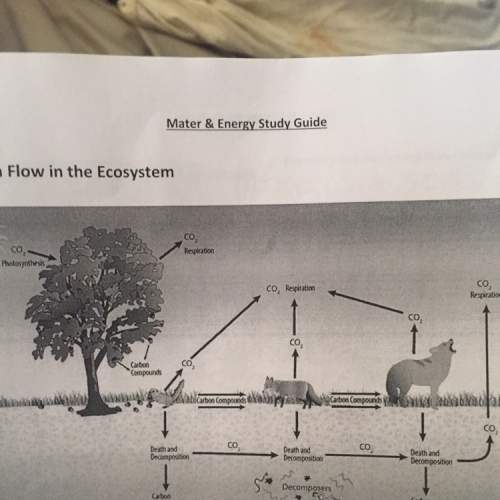
Biology, 17.02.2021 21:10 ineedtopeebeforethec
Compare the mechanism of ATP production in photosynthesis and cellular respiration (aerobic and anaerobic). State the differences and similarities.

Answers: 1


Other questions on the subject: Biology

Biology, 21.06.2019 13:00, vannia
What is the difference between self-pollination and cross-pollination? question 2 options: self-pollination leads to the creation of a fruit. cross-pollination does not. during cross-pollination, ovules are carried from one plant to another plant.. during self-pollination the ovules stay on the same plant. during cross-pollination, ovules are carried from one plant to another plant.. during self-pollination the ovules stay on the same plant. during cross-pollination the pollen grains are carried from one plant to another plant. during self-pollination the pollen and ovules are from the same plant. during cross-pollination, the pollen grains travel from the stigma to the anthers. during self-pollination, the pollen grains travel from the anthers to the stigma.
Answers: 1

Biology, 21.06.2019 17:30, sihamabdalla591
If the birth rate of a population of dolphins is 2.0, the death rate is 0.5, and the population size is 100, what is this dolphin's population growth?
Answers: 1

Biology, 21.06.2019 21:20, cxndii13
Indicate whether the following statements about the biases in the fossil record are true or false. a) inland species are more likely to be preserved than marine species b) organisms with hard body parts are more likely to be preserved than are those composed soft tissues. c) species that existed over a larger area are more likely to be preserved than species existing over a smaller area. d) organisms that lived very long ago are more likely to be found as fossils than organisms that lived relatively recently e) the fossils of larger organisms are more likely to be found than the fossils of smaller organisms
Answers: 2

Biology, 21.06.2019 23:00, gthif6088
The tasmanian devil, a marsupial carnivore, is facing extinction due to devil facial tumor disease (dftd) which causes bulging cancerous lumps and lesions to erupt around the face and neck — often causing enough deformation to make seeing or eating difficult. dftd has evolved into a contagious cancer, a trait that is unique among cancers. devil mating behavior involves biting around the head and neck, allowing cells from one individual — especially cells from the crumbly dftd tumors — to be transferred to the wounds or face of a new individual. this marsupial was once found across australia, but sea levels rose, isolating the tasmanian population, while the australian population went extinct. what would be an outcome of genetic isolation that is likely to have impacted the spread of dftd? a) reduced territory puts diseased individuals in greater contact with non-diseased ones. b) inbreeding results in less variation in facial features so the cancer is generally fatal. c) genetic isolation has made it difficult for scientists to develop a vaccine against dftd. d) the lack of genetic variation in the immune system of tasmanian devils minimizes resistance to the disease.
Answers: 3
You know the right answer?
Compare the mechanism of ATP production in photosynthesis and cellular respiration (aerobic and anae...
Questions in other subjects:



Geography, 25.03.2020 18:58






Mathematics, 25.03.2020 18:58




